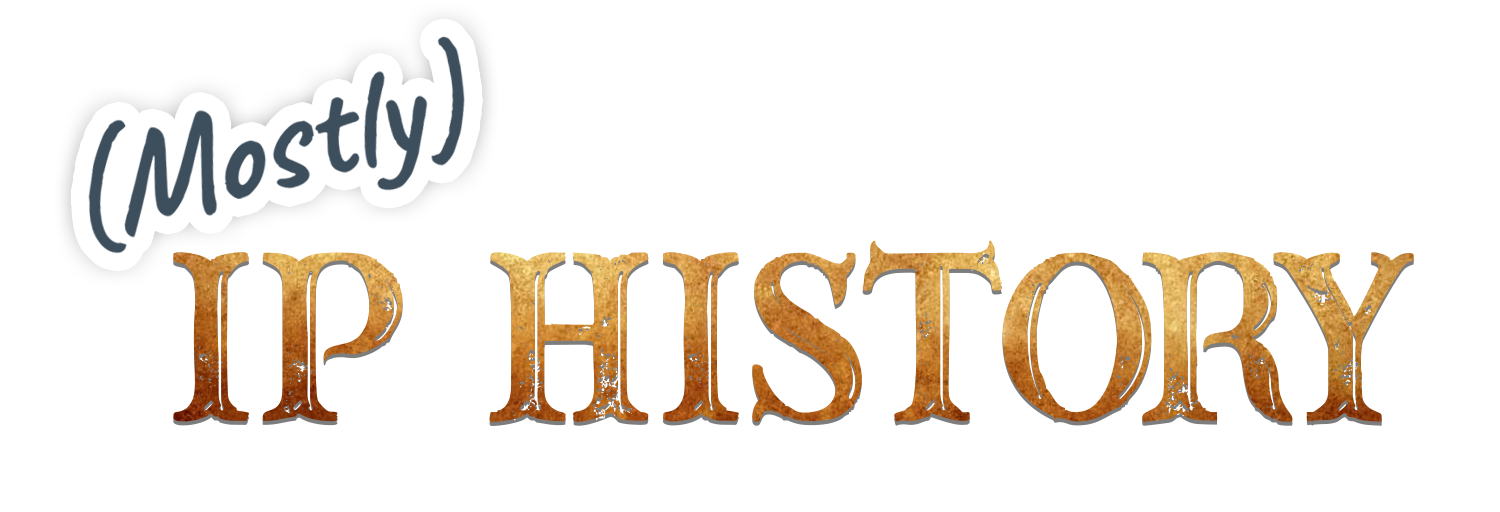How We Got a Register of Copyrights
One question that seems to pop up repeatedly in comment threads on the recent de facto removal of the Register of Copyrights is to ask how why the position is called the Register of Copyrights, and why the Copyright Office remained in the Library. In this post I’ll offer some thoughts on the question, and give some history of how the US Copyright Office remained part of the Library of Congress in the waning days of the nineteenth century.
As I’ve written, Librarian of Congress Ainsworth Spofford succesfully pushed in make national copyright registration part of the portfolio of the Library of Congress in 1870. His main interest in securing copyright registration for the library was to get the deposits of all works registered for copyright, and the centralization of copyright in the library furthered that goal. Within two years after copyright was centralized in the Library of Congress, the Librarian felt he was being buried under an avalanche of deposits of nonliterary/nonartistic materials – mostly product labels and advertising prints – and succesfully convinced Congress to place copyright registration for such works in the Patent Office, where it remained until 1940.1
In December of 1895, a bill was introduced in the Senate providing for a Register of Copyrights, appointed by the President and Confirmed by the Senate.2 The record does not completely show why the term Register of Copyrights was used – the bills were presumably developed in consultation with Ainsworth Spofford, by then in his 31st year as Librarian of Congress. In hearings held in November and December of 1896, Spofford indicated that he was both the Librarian of Congress and Register of Copyrights, and that the books used to record copyrights were referred to a registers. However, Spofford recommended the “copyright business” be seperated from the Library, and be put under the control of a “Registrar of Copyrights,” but should be housed in the new Library building as a seperate agency.3
In the same Congress, a freshman (and ultimately one-term) Congressman from rural Missouri, William Treloar, introduced his own comprehensive bill to reform copyright (PDF, 4 MB – bill text and hearing).4 Treloar was a composer and music publisher, whose advertisements trumpeted his compositions selling a million copies.5 I’ve written about the Treloar Bill in the past, in the context of the creation of performance rights for music, but what’s of interest here are the provisions for the administration of copyright in the United States. In particular, the Treloar Bill provided for a “Commissioner of Copyrights,” appointed by the President with the advice and consent of the Senate, with the powers one would expect of an executive appointment. At a hearing on the bill these provisions were popular with copyright stakeholders, but the Treloar Bill foundered on its provisions that would have extended the manufacturing clause.
In the end, despite the popularity of the idea of separating the copyright function from the Library of Congress, Congress was uneasy with the Constitutional implications of allowing the President to appoint, with Senate consent, a legislative officer under the supervision of the Joint Committee on the Library, as the copyright statutes stipulated. The confusion as to whether a Register of Copyrights even could be an executive appointment lead Congress to remove any mentions of a Register of Copyrights in the omnibus funding bill that would include funds for the relocation of the Library to its new building. However, at the last minute and with minimal debate, the Senate provided for a Register of Copyrights to be appointed by the Librarian. Without any real further comment from Congress, that has been the state of affairs ever since.
As for the name of the position “Register of Copyrights,” a keen reader may notice I don’t have a firm answer. However, looking at the debates and hearings at the time, the title “Register” seems to have been the functional term for the position which Ainsworth Spofford used to identify the function of being in charge of copyrights, in contrast to the title of “Registrar,” which Spofford felt he held de facto, but not officially.
- The 1874 Print and Labels Act and its relationship to the major cases of copyright law, including Higgins v. Keuffel and Bleistein v. Donaldson Lithographic, is the focus of my article Reimagining Bleistein. ↩
- The detailed legislative history this bill, with all citations, is included at Footnote 166 of Chapter 1 of the online version of William Patry’s Copyright Law and Practice. ↩
- Hearing appended to 54 S. Rep. 1573 at Pg. 133. The full text of Spofford’s remarks was:
Representative QUIGG. You made a report to one or the other branch of Congress advising that the copyright business be separated from the business of the library?
Mr. SPOFFORD. Yes; connected with the Library of Congress, but in charge ot a separate responsible and competent officer, who might be called the registrar of copyrights.
Representative QUIGG. Did you recommend that there be any connection between the copyright business and the Library as such?
Mr. SPOFFORD. I entered into no detailed statement in that direction, but I would like to say that it would be eminently proper that the Registrar of Copyrights, when appointed. should hand over to the Librarian all publications received by him that have gone through the necessary process, so as to form part of the Library collections. ↩ - The version of the bill in the hearing print is a bit different from the original published version of the bill. ↩
- It’s difficult to know if this is accurate, although some skepticism may be warranted. As an example of Treloar’s art, this is his composition Cuba Must be Free (PDF, 4MB). ↩





